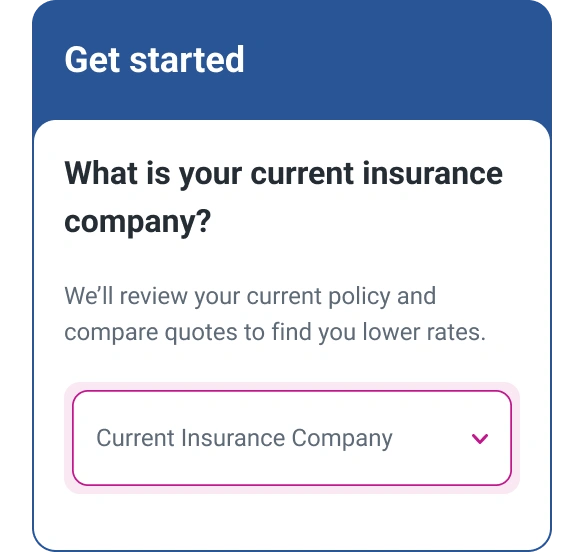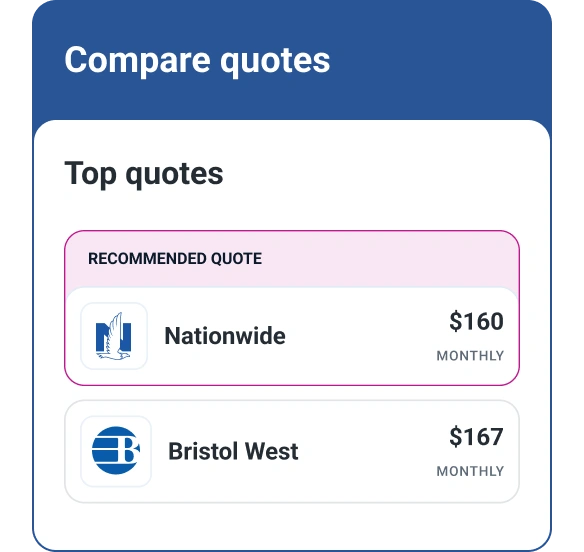How to Get the Best Car Insurance
Quick Answer
Find the best car insurance for you by following these steps:

Price may be the first thing you think about when shopping for car insurance, but it's far from the only thing to consider. You should also look for an insurance company that's dependable and easy to work with. You can get the best car insurance by determining how much coverage you need, setting a realistic budget and deductible, searching for discounts and comparing quotes from a variety of providers. Here's a step-by-step guide to getting the best car insurance.
1. Determine What Coverage You Need
To figure out how much coverage you need, start with your state's insurance requirements and go from there. The five basic types of coverage most people will want to consider are liability, collision, comprehensive, uninsured/underinsured motorist and medical or personal injury protection.
Liability insurance covers injuries to other people or damage to property due to an accident that's your fault. Most states require a minimum amount of liability insurance, but you can buy more. Insurance experts generally advise purchasing at least $100,000 in property damage coverage, plus $100,000 per person and $300,000 per accident for injuries.
Some states require additional coverage:
- Personal injury protection (PIP) covers medical payments if you're injured in an accident, no matter who's at fault. It may also cover lost wages, funeral expenses and other expenses from an accident.
- Uninsured/underinsured motorist coverage protects you if another driver causes an accident but doesn't have auto insurance or doesn't have enough insurance to cover your losses.
- Medical payments coverage helps cover the cost of injuries you, your family and other passengers in your vehicle suffer, regardless of who's at fault. It's only required in Maine and New Hampshire.
Full coverage insurance goes beyond your state's requirements, adding two key coverages:
- Collision coverage pays to repair or replace your vehicle if it's damaged in a collision with another vehicle or object, such as a telephone pole.
- Comprehensive coverage pays to repair or replace your car if it's stolen or damaged by something other than a collision, such as fire, natural disasters, falling or flying objects and other risks you can't control.
Comprehensive and collision coverage are optional in most cases. However, if you're leasing a car or still paying off a car loan, the lienholder generally requires carrying this coverage to protect the vehicle.
There are plenty of auto insurance add-ons to choose from too. These include:
- Roadside assistance coverage
- Gap insurance
- Auto glass insurance
- New car replacement coverage
- Trip interruption coverage
- Rental car reimbursement coverage
2. Set a Budget
Balancing your coverage needs with financial realities is an important step in choosing car insurance. Review your household budget to assess how much you can realistically spend on auto insurance. Consider whether you can afford to pay your entire premium upfront, which may earn you a discount, or whether you'll need to pay monthly to avoid draining your bank account. Your budget will also influence the deductible you choose.
3. Decide on Your Deductible
You can typically choose a deductible between $250 and $2,000 when purchasing car insurance. Your deductible is the amount you're responsible for paying when you file an insurance claim; the insurance company pays the rest. For instance, if you have a $250 deductible and file a claim for $1,500 worth of damage to your car, the insurance company pays $1,250 and you pay the remaining $250.
Opting for a higher deductible usually lowers your insurance premiums. However, it's important to make sure you can afford to pay your deductible if you have a claim. If you have a solid emergency fund, you might feel comfortable with a $1,000 deductible; if paying that amount would empty your bank account, a lower deductible may make more sense. When shopping for insurance, get quotes for different deductibles to see how they affect your premiums.
4. Look for Discounts
Auto insurance discounts may vary from one insurer to another, but here are some common ones to look for.
- Safe driver discounts for going a certain number of years without accidents or moving violations
- Low-mileage driver discounts
- Good student discount for maintaining a "B" average or better
- Discount for completing a safe driving course
- Multi-vehicle discount for insuring more than one car
- Bundling discount for purchasing more than one type of policy (such as auto and home insurance)
- Discount for membership in a professional, occupational or alumni organization
- New car discount
- Car safety or anti-theft equipment discount
- Discount for getting quotes online or buying your policy online
- Discount for paying your annual premium upfront, setting up autopay or choosing paperless billing
5. Get Rate Quotes
You can get rate quotes by visiting insurance company websites or calling insurance companies, but this can be time-consuming. For a more convenient way to explore your auto insurance options, try Experian's free auto insurance comparison tool. Just input your information once to get quotes from top insurance companies in minutes. Experian's tool provides apples-to-apples comparisons, ensuring all your quotes include the same type and amount of coverage personalized to your needs.
Before you start shopping for car insurance, gather the following information:
- Your current auto insurance policy, if you have one
- Your current yearly and monthly car insurance premiums
- Vehicle identification numbers for all the cars you want to insure
- Driver's license numbers for all drivers in your household
- An estimate of how many miles you drive each car per year, including how many miles you commute each day
- Your state's minimum auto insurance coverage requirements, which you can find on your state department of insurance website
You'll also be asked for personal information such as your name, address and whether you're married or own a home.
Learn more: Factors That Affect Your Car Insurance Costs
6. Research Insurance Providers
Price is important when choosing auto insurance, but it's not the only factor to consider. If you ever have a claim, you'll want an insurance company that's helpful and convenient to work with. Get recommendations from friends and family members and check customer satisfaction ratings to see if customers are happy with the provider. Also check ratings from companies such as A.M. Best, Fitch, Moody's and Standard & Poor's to make sure the carrier is financially stable.
Once you've found an insurance company you're happy with, using the same provider for both home and auto insurance can simplify your life (and may earn you a discount).
7. Review Your Policy Annually
It's a good idea to review your car insurance policy at least once a year to make sure it still suits you. You should also update your policy whenever you have a life change that impacts your insurance needs. For example, getting married or divorced, adding a new driver or vehicle to your household, moving to a different ZIP code or significantly changing your driving habits are all reasons to adjust your car insurance.
You can go over your policy with your insurance agent to see what cost-saving options they suggest. Then compare quotes from other insurance companies to see if you can find a more affordable policy elsewhere.
Frequently Asked Questions
The Bottom Line
To strike a balance between the coverage you need and the price you can afford, regularly take the time to review your car insurance coverage and get quotes from other insurance carriers. To assess your likelihood of filing a claim, car insurance companies in most states can review your credit-based insurance score when you apply for coverage.
Although credit-based insurance scores differ from the scores lenders use, both kinds of scores use information from your consumer credit report, so checking your credit score can suggest where your credit-based insurance score falls. Paying bills on time and lowering your credit utilization rate could help boost your credit score, which could save you money on car insurance.
Don’t overpay for auto insurance
If you’re looking for ways to cut back on monthly costs, it could be a good idea to see if you can save on your auto insurance.
Find savingsAbout the author
Karen Axelton specializes in writing about business and entrepreneurship. She has created content for companies including American Express, Bank of America, MetLife, Amazon, Cox Media, Intel, Intuit, Microsoft and Xerox.
Read more from Karen

